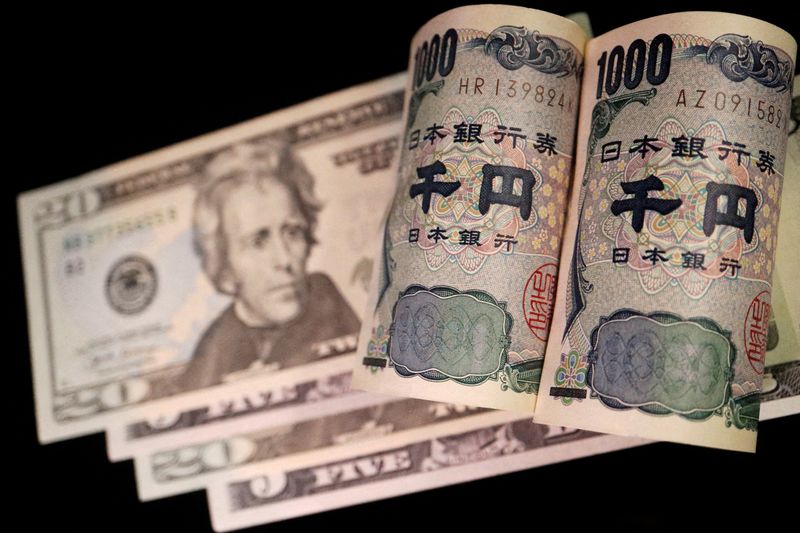By Jamie McGeever
(Reuters) – A look at the day ahead in Asian markets.
The yen dam has been breached, but hasn’t burst.
Not yet, anyway.
The currency’s brief slide on Wednesday to a new 34-year low near 152 per dollar triggered an emergency meeting of Japan’s three main monetary authorities, suggesting direct intervention in the market to stop what they consider disorderly and speculative moves is imminent.
Asian market focus on Thursday will be on whether Tokyo backs up its increasingly loud and frequent warnings with action. Finance Minister Shunichi Suzuki said authorities could take “decisive steps” – language he hasn’t used since Japan last intervened in 2022.
The dollar has pulled back towards 151.00 yen of its own accord, a move that will extend if hedge funds and speculators start covering their substantial short yen position. Tokyo’s helping hand would accelerate it further.
But currency traders appear relaxed or skeptical about intervention. Dollar/yen volatility ticked up only slightly on Wednesday, and is still around its lowest levels in two years.
Analysts at HSBC note the dollar is not in the ‘bubble-like state’ of late 2022, so the risk is any action now would yield “very limited success.”
Analysts at Morgan Stanley say there is little incentive to intervene from a fundamental perspective – Japan’s terms of trade have improved, the weak exchange rate has hugely boosted exporter revenues and rate differentials are still heavily against the yen.
Joseph Wang, a former senior trader at the New York Fed, was more blunt: “Time for the authorities to put up or shut up. But honestly, my guess is intervention would be a waste and just buy a little time,” he tweeted on Wednesday.
Japan’s officials may not fully welcome the yen’s weakness, but equity investors do. The Nikkei is on the brink of new highs, up nearly 22% so far this year and on track for its best quarter since Q2 2009.
Another 1.5% to the upside by the end of the week will seal the index’s best quarterly performance on record.
If Japanese stocks are on a roll, however, Chinese stocks are again threatening to roll over. The country’s two main indexes slumped more than 1% on Wednesday, their steepest decline in a month and pushing them into the red for March.
Authorities in Beijing may have welcomed Chinese industrial profits swinging back into positive territory, but they will not want to see stocks head back to their recent five-year lows and overseas investment dry up.
In some respects, the keenest observers of whether Japan intervenes in the FX market are in Beijing. The yen is at its weakest level in more than 30 years against China’s yuan, giving Japan a major competitive advantage over its rival.
Here are key developments that could provide more direction to markets on Thursday:
– Australia retail sales (February)
– Thailand industrial production (February)
– Bank of Japan summary of opinions from March 18 to 19 policy meeting
(By Jamie McGeever; Editing by Josie Kao)
